So Long, Neighbourhood: Capturing Two Years’ Worth Of Change In Sai Ying Pun
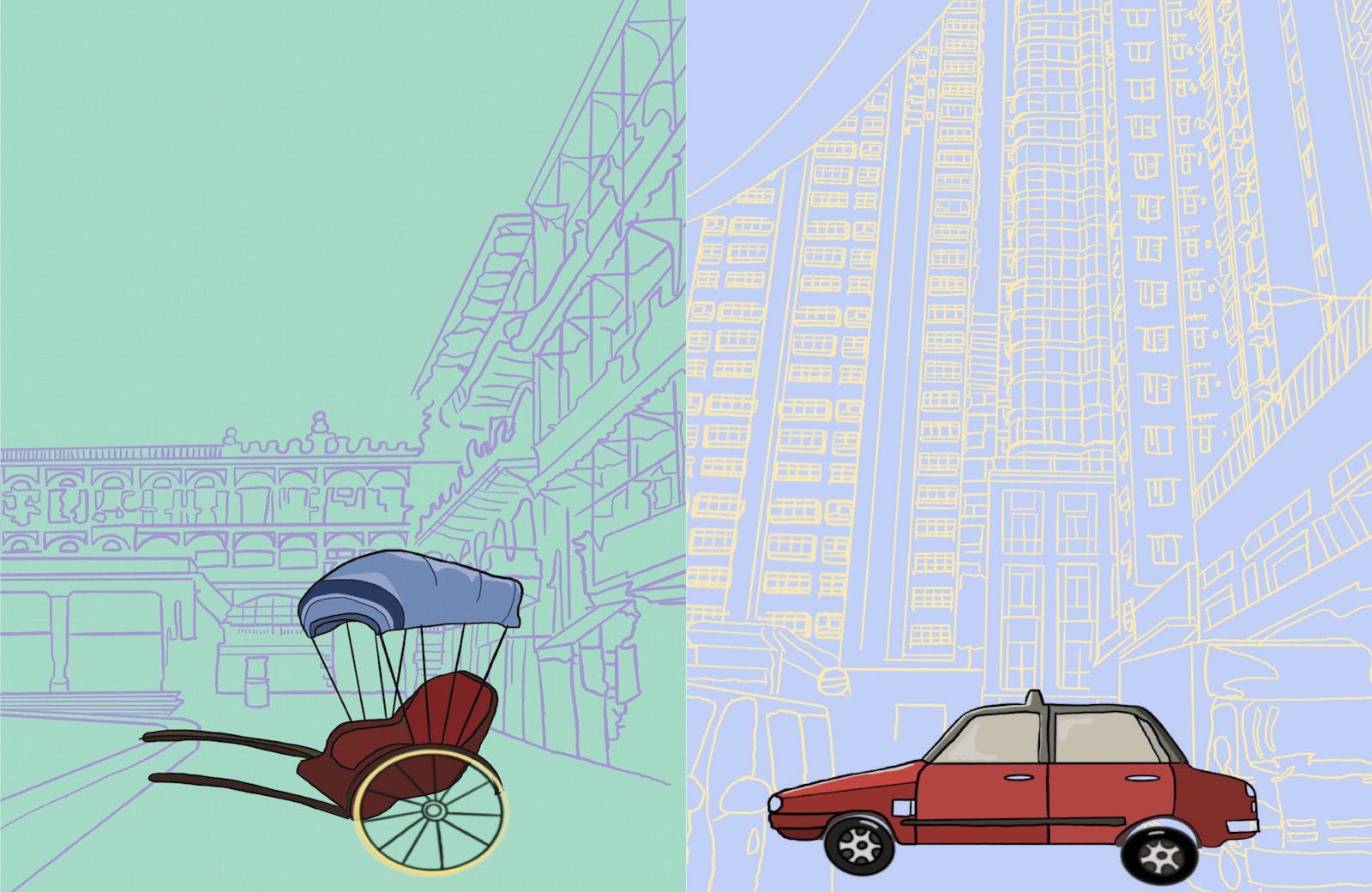
In June 2018, in the middle of the steamy Hong Kong summer, a neighbourhood museum popped up in the streets of Sai Ying Pun, one of the city’s older districts. Featuring 16 of the local community’s most beloved tradesmen and businesses, the pride and joy of their fellow neighbours, the intimate portraits of these local champions attracted hundreds of visitors on this hot and humid weekend. A celebration of local craftsmanship, the 16 were handpicked amongst many to be shared with an audience beyond the neighbourhood, all of them a true indicator of Sai Ying Pun’s history and authentic community spirit. Among these local gems were Kwong Lam Kee, a friendly neighbourhood homeware store, and Chi Loy Heung, a household choice for freshly baked egg rolls; both had a history spanning over half a decade. Fast forward two years later and Google shows a ‘permanently closed’ page. An authentic, local experience that has been erased forever. Welcome to Hong Kong, the city of change.
2 years later
In June 2020, in the aftermath of the Hong Kong protests, in a city closed by COVID measures, 4 students took part in an internship project to take stock of the changing face of Sai Wan, the district with some of the city's oldest and steepest neighbourhoods, Sai Ying Pun, Shek Tong Tsui and Kennedy Town. At a time when travel was not permitted, they travelled in their own city. This in-your-own-backyard explorer’s camp was an opportunity to be immersed in the neighbourhood for two weeks. They revisited the 16 shops, spoke to residents, researched the dynamics of urban change and used creative media to tell their stories. They walked, talked, listened and learned. This is what they found.
Same Place, Different Century; by Adelle


Few people know that in the early 1900s, Shek Tong Tsui was an entertainment hotspot. Restaurants, theatres, and brothels were dotted around Hill Road and Queens Road West. After WWII, when the government banned prostitution, the area has taken a 180-degree turn. The closure of brothels completely transformed the area. In what is now a peaceful residential neighbourhood, I went looking for traces of its vivacious past.
My knowledge of Shek Tong Tsui used to be very limited, in fact, I had never visited the area before. Exploring the neighbourhood through my camera lens, I wanted to have a better understanding of how people feel about the place. I interviewed some long-time locals at the market and Cooked Food Centre. They all lived in the neighbourhood for most of their lives. Yet, none of them experienced what it was like to live here when it was still a red-light district. Also, the once-famous restaurants, popular theatres and bustling night markets all closed in the 1960s and 70s.
The old scenes of bright lights and debauchery have faded and, over time, slowly transformed into the close-knit, slow-paced neighbourhood it is today.
The locals mostly characterise their neighbourhood as peaceful. Yet, in recent years, with the many newcomers to the area, they did see it transform from a quiet pocket to a more popular destination. As the bakery owner puts it, “the old scenes of bright lights and debauchery have faded and, over time, slowly transformed into the close-knit, slow-paced neighbourhood it is today.”
About Adelle

Adelle is born and raised in Hong Kong and is currently a student who is studying abroad at Loyola Marymount University. She eats, dances, and sings a lot, loves to snowboard and do fun outdoorsy stuff. Find her at @adelleki
Immortalised in Memory; by Lena
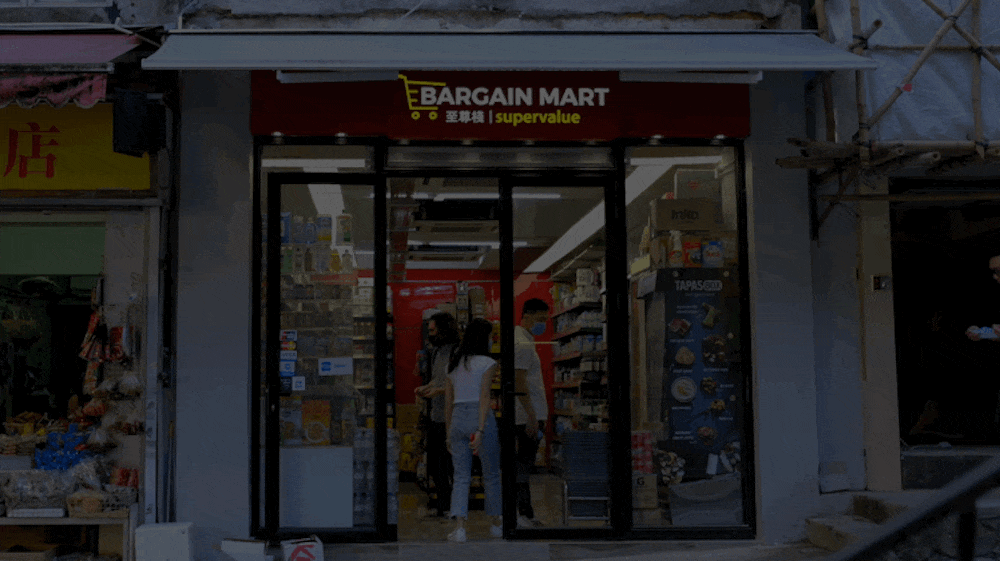
Kwong Lam Kee was a go-to store for everyday dinnerware and last-minute wedding gifts. When walking into the dimly lit, cramped store, you’d find yourself surrounded by China and porcelain, iconic fixtures at every traditional dinner table. The last shopkeeper of Kwong Lam Kee, Auntie Kwong, took over the store in 1997, the very year Hong Kong assumed its autonomous status. It can very well be said that this is truly a store that has witnessed the ever-changing state of Hong Kong. Kwong Lam Kee closed for good in November 2018. Instead of the traditional homeware store is now an anonymous wholesale bargain goods store.
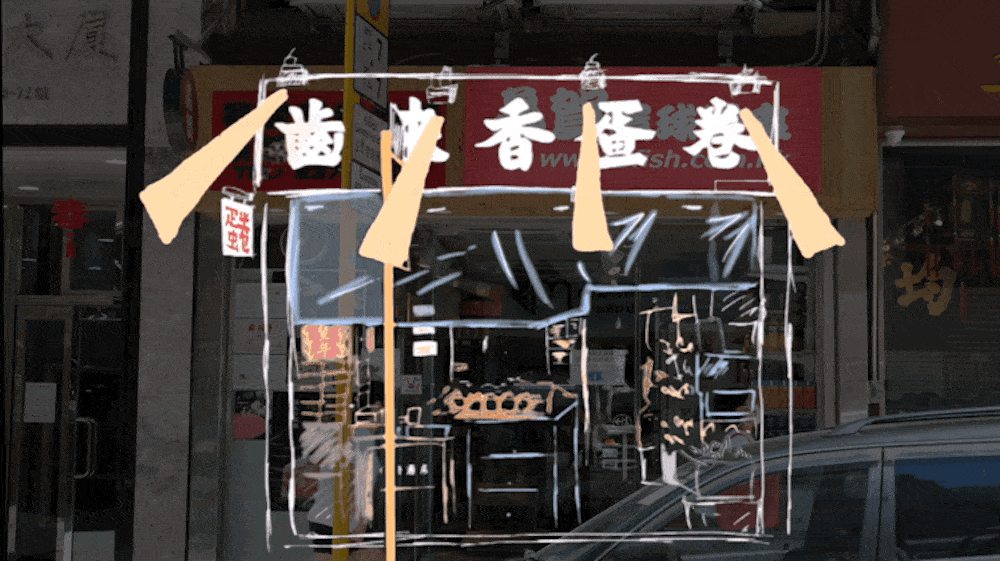
The small bakery amidst the array of stores huddled together on Third Street, Chi Loy Heung was one of the few businesses that stayed true to the old method of working with a grill. The shop’s bakers perfected each individual egg roll to a crunch by hand, instead of adopting large-scale manufacturing methods. Every Chinese New Year or festive season, crowds used to line up around the block since the early morning, scrambling to get their hands on the local delicacy. Alas, with the continuous development of Sai Ying Pun, Chi Loy Heung succumbed to the increasing rental prices in the area and closed down in late 2018. In late 2019, Chi Loy Heung relocated to its new location at the end of Third Street. However, its signature storefront and familiarity are a thing of the past.
About Lena

Lena is a student in the field of Media and Communications. She is a digital media artist passionate about telling stories that matter, and an advocate for wielding media influence as a tool for change. Discover more about her @www.lenahuang.me.
It’s Not Sai Ying Pun Without…; by Gordon
After spending a couple of days exploring Sai Ying Pun, I created a list of what I think makes the area unique. Without these things, Sai Ying Pun would not be Sai Ying Pun. I chose to present my findings through an animated video because I thought it would be fun to put a spin on the typical lists you usually see online. This is my Sai Ying Pun top 8.
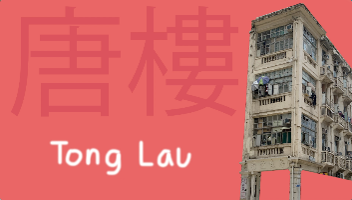
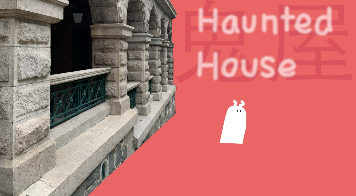
1. Tong Lau
These two-legged 19th-century buildings were once seen all over Hong Kong, but now, these species are on the decline. Thankfully there are two of them left in the SYP area, and hopefully, we can see these magnificent beasts roam the streets of HK once again.
2. Haunted House
Perhaps the best-known haunted building in SYP is the Sai Ying Pun Community Complex, which used to a mental hospital. Spooky! My dormitory was a mental hospital as well. That’s why the entrance doors were so heavy… to prevent the ill from escaping…
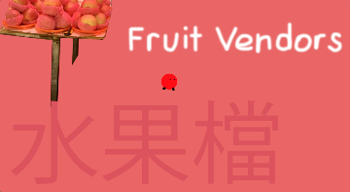
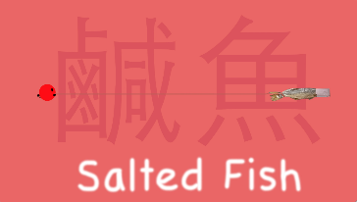
3. Fruit Vendors
Yes, fruit vendors are everywhere in Hong Kong, however, what would Sai Ying Pun be without them? Sometimes you even see a fruit or two rolling down the hill…
4. Salted Fish
I don’t like eating fish, but I do like salt. If I didn’t like salt, I wouldn’t have put salted fish on the list. But because it’s a Sai Ying Pun staple, I am forced to add it… plus, salted fish is also a very old delicacy which roots back to our heritage.
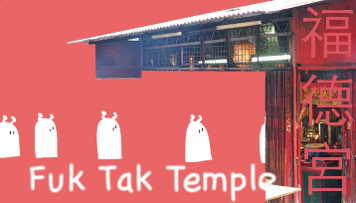
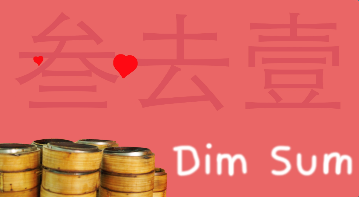
5. Dim Sum
Ok, hear me out on this one. I know Dim Sum restaurants are everywhere in Hong Kong, but this restaurant is over 30 years old and quite cheap. Between my friend and me, we spent 99 HKD for 5 dishes, which we ate while seated next to a fuse box. “If the fuse box looks like it is about to explode, then you know the food is good,” my friend advised. The fuse box looked like it was going to explode… and the food was good, so his claim is now a fact I live by.
6. Fuk Tak Temple
This temple used to give out free rice during the Ghost Festival, and I think that is more than enough to make it onto this list. It’s free rice, I cannot stress that enough.
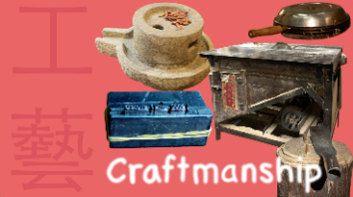
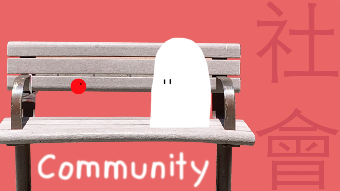
7. Craftsmanship
There are a lot of old masters who have been perfecting their craft for decades. They’re a rarity nowadays and need to be cherished and preserved, like an endangered species.
8. Community
To end my list off on a warm note, and a typical one. The local community is what really shapes a neighbourhood. Sai Ying Pun used to be a place where everyone seemed to know everyone. Today, the community is a bit scattered. Still, while eating in the Dim Sum restaurant, I saw how very friendly everyone was to each other, sitting close together, having good banter. I placed my bag down on the floor, and a customer gave me an extra chair so my bag wouldn’t get dirty. That’s when I knew this place was special…
About Gordon

Gordon is a second-year Parsons student studying Fine Arts and has been living in HK for 20 years. He values public transport and is an avid NUMTOT. He’s always down for McDonald’s Shake Shake BBQ fries even though the price increase on meals has made him displeased. He can be seen frequenting meme pages, laughing at dumb images, and is dangerously ironic.
Changing Faces long the Tramline: by Mudit
The tram is one of the oldest and most used transportation services in Hong Kong. The memories of times long gone only exist on faded black white postcards. I wanted to revisit the history of Hong Kong through they eyes of people who were on the tram a century ago. From a backyard to a booming market, the pictures tell us about the immense change. But even after going through a century of expansion and renewal, Sai Wan is full of character and history. The past and the future of this wonderful pocket is one of new immigrants and businesses. Only one thing will remain the same and that is the tram tracks!
The end of the Line
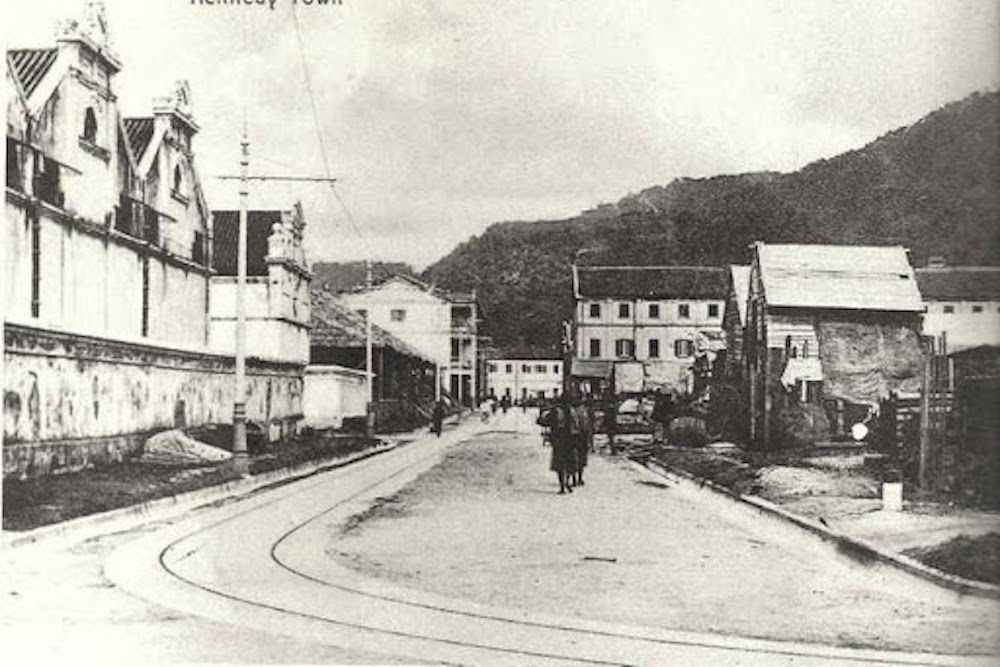
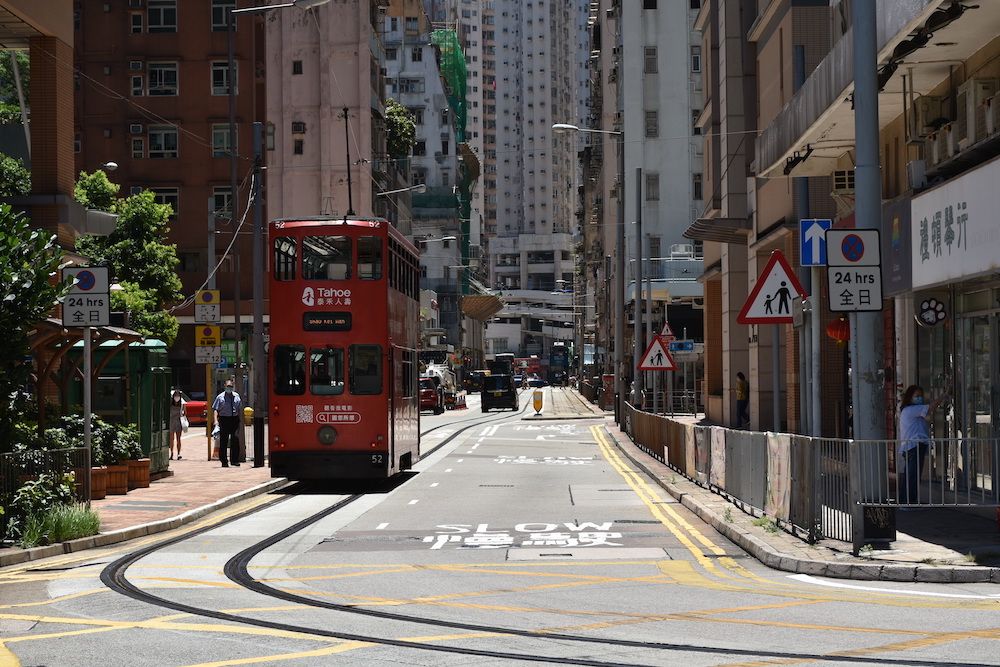
This was the furthest the tramway went. Sai Wan was always the ‘backyard’ of the island. In the early years the waterfront was lined with rice depots, later slaughterhouses, factories, wholesale markets and mortuaries were built. Right next to the line used to be an abattoir. The abattoir was demolished in 2009, and now there is a tall residential tower called ‘The Merton’ in its place. It is one of the few places in Hong Kong where you can be right at the waterfront.
I have lived in Sai Wan for 30 years. Back then it would cost $1 or less to ride the tram.
Shophouse Street
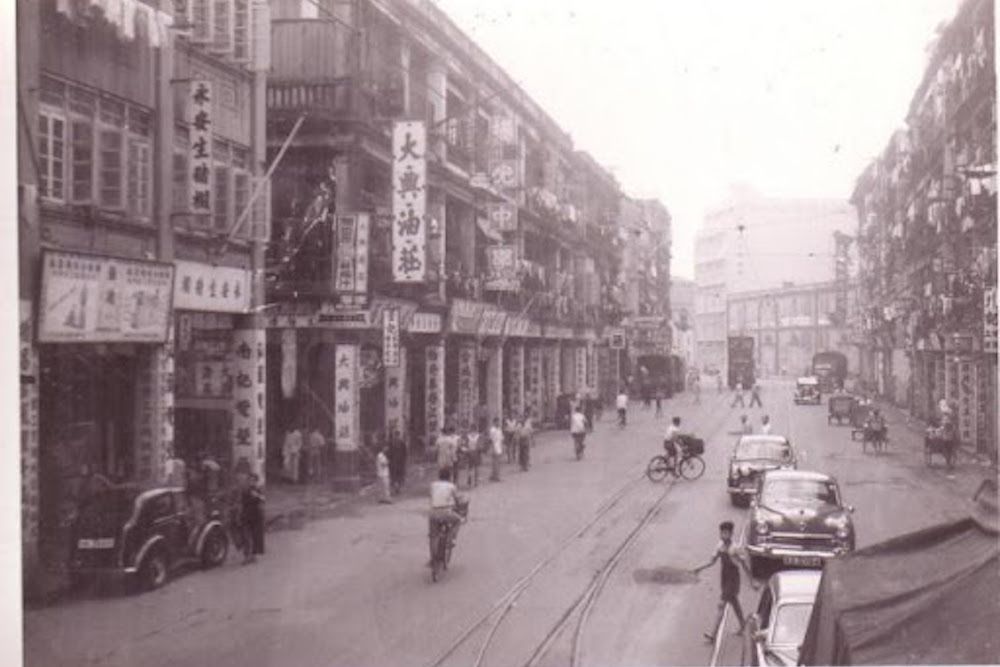
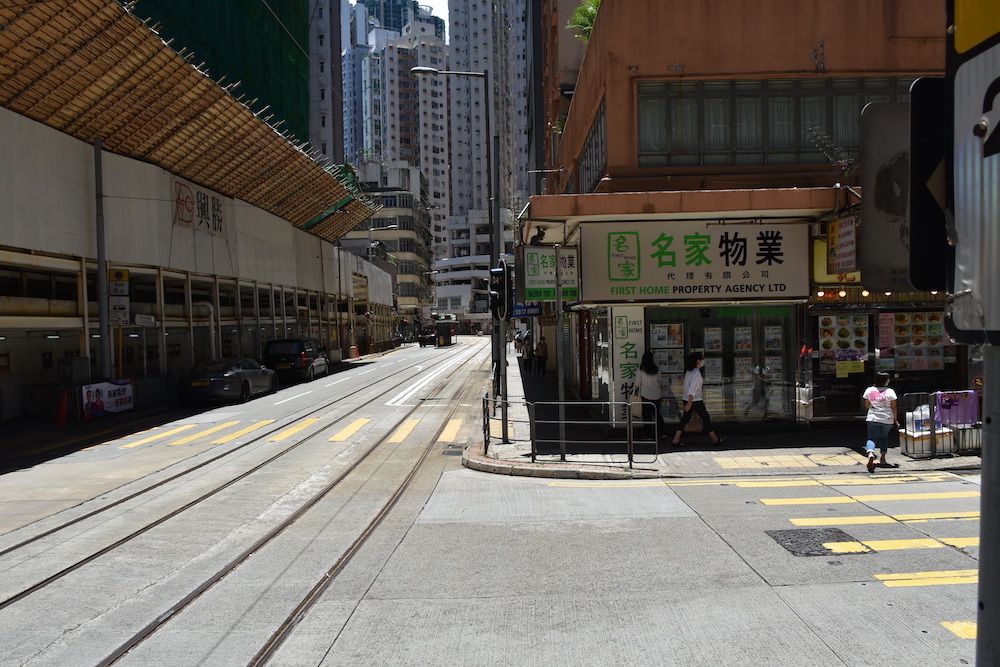
The tram tracks are actually one of the few constants in an ever-changing Hong Kong. Little has remained the same here since 1957. Even the width of the street has been decreased to make way for new buildings. At the time, behind the buildings on the left was the bay, now there are more housing blocks. If you look around Kennedy Town today, you will still see many shops on the ground floor and overhangs providing shade on a hot day. The days of handwritten shop signs may be over but the multi-coloured signboards make each shop unique.
Our shop is literally on the tram track, so we didn’t have to think long about a name. We even painted the interior ‘tram green’.
The Praya

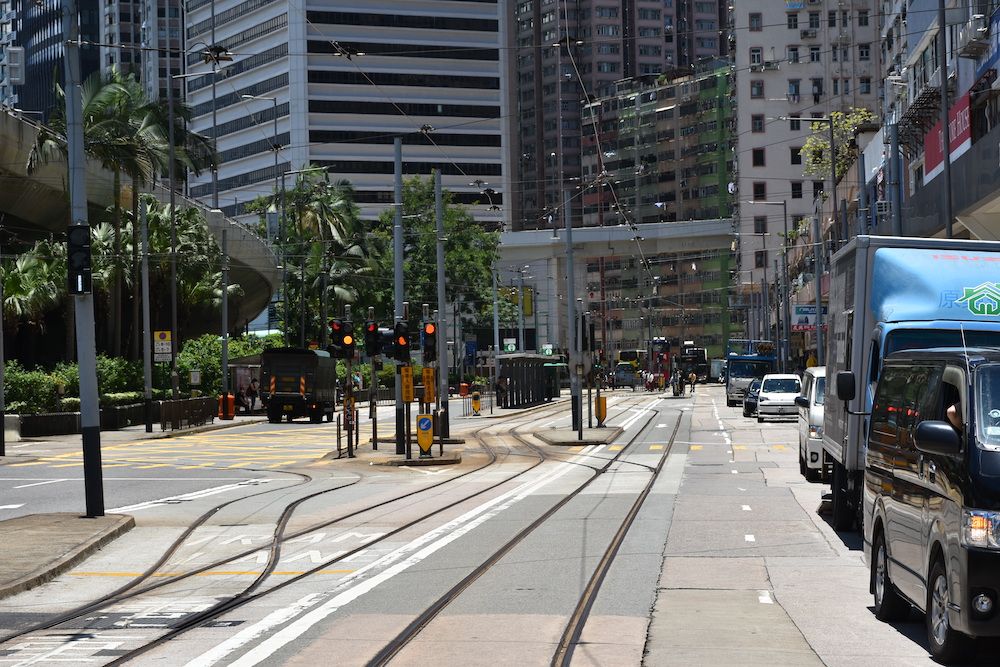
The photo shows the bay and the ferry that would take people to Kowloon and outlying islands. Next to it was a police station. The praya has transformed drastically over the years, even the name has changed, it is now called Des Voeux Road West. Did you know that before the 1980s, the tram tracks in Sai Wan were right at the edge of the waterfront? Land reclamation made it much wider Today, residential buildings make up much of the environment around the tramway.
People would run to catch the tram and sometimes they would trip… something interesting would happen every day right outside my shop.
Tram Ways
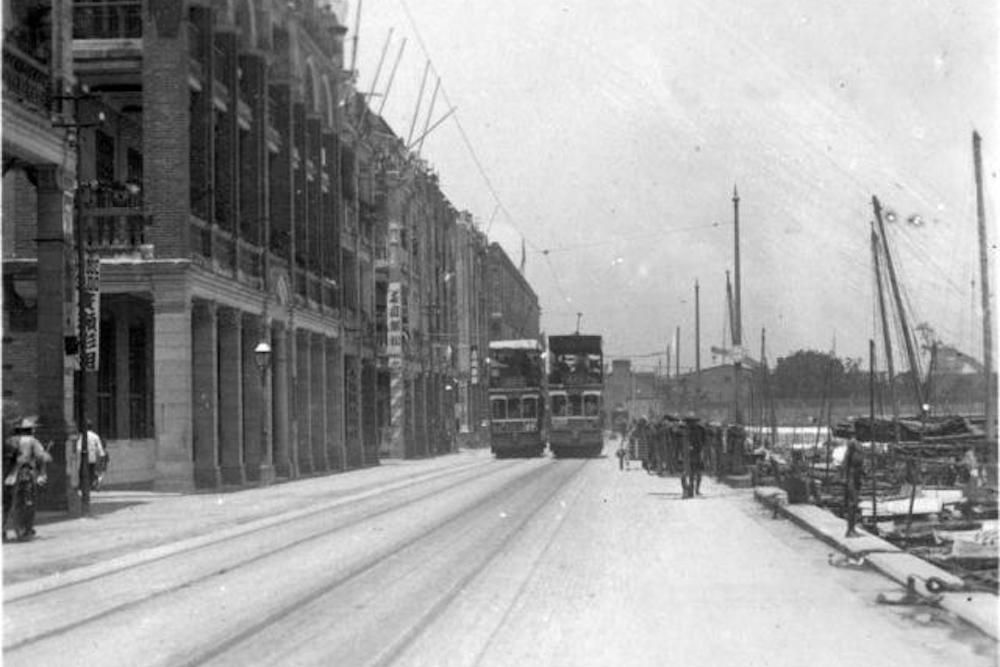
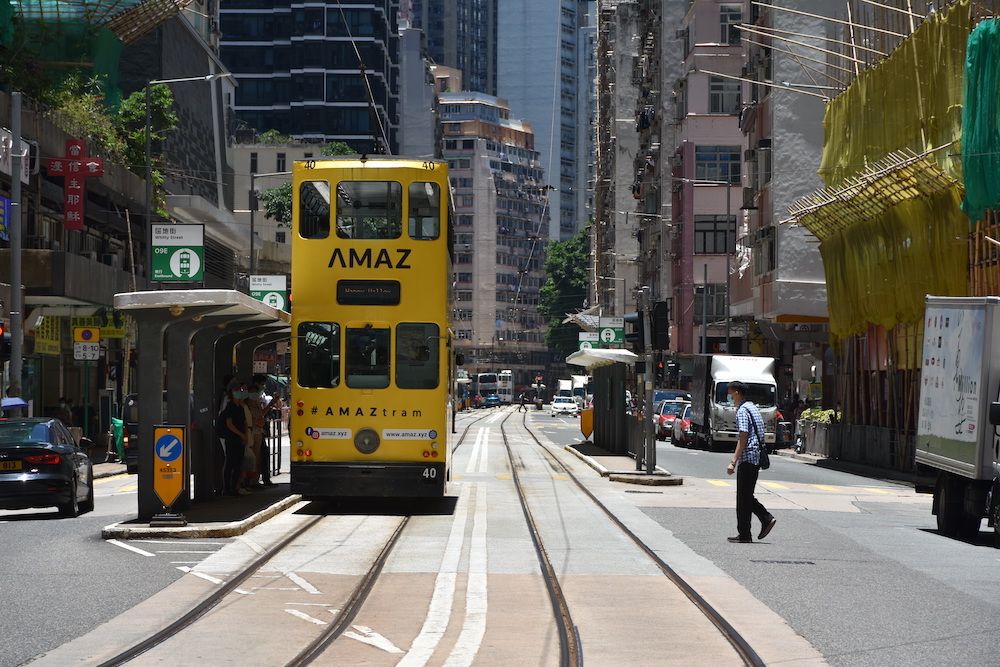
The tram was a very important mode of transport back in the days, there was little space for vehicles on the road. The tram system was built to give quick access to all areas of ‘Victoria City’ and reduce dependence on the chair coolies that were the main form of transport then. From the start of operation in 1904, the trams were electric, Hong Kong tramways never used horse or steam power. Even with the arrival of the MTR in 2015, the tram remains a convenient and cheap mode of transport for people living in Sai Wan.
The tram is an integral part of many elderly in Sai Wan, it is easier and cheaper for them.
About Mudit

Mudit is a student in Hong Kong and he has lived in Hong Kong for 6 years. He moved to Hong Kong with his family for work and he has just completed high school. His favourite things to do in Hong Kong are to play volleyball and badminton, eat dumplings and ride around HK on the tram.
Getting to Sai Ying Pun; in this video you meet Gordon, Lena, Adelle and Mudit as they explore the neighbourhood
A Reflection
Cultural Displacement or Urban Revitalisation?
Tucked away amongst Hong Kong’s ever-developing infrastructure and towering skyline are the city’s authentic local trades; hidden gems loved by locals and visitors alike. Sai Ying Pun, a fishing port in the colonial days, is home to some of the last few remnants of the previous era. Cramped tenement buildings and traditional brick-and-mortar stores built in the last century are still well and alive in this small Sai Wan neighbourhood; storeowners of ground-level properties earn a living in the daytime and walk upstairs to retire for the night. For many kai fong (people of the same neighbourhood), their entire lives revolve around the same few streets and familiar faces.
Sai Ying Pun only got an MTR station in 2015. The inconvenience of it being not as easy to reach has allowed the area to retain much of its character and identity for a relatively long time. Alas, newfound accessibility comes with change. Even though Sai Ying Pun used to be relatively undeveloped compared to some of its counterparts, the neighbourhood’s heartwarming and familiar sceneries are increasingly becoming a rarity.
The community spirit in today’s Sai Ying Pun is no longer as prevalent as it was a decade or two ago: animated, leisurely conversations between kai fong have made way for brisk footsteps to accommodate the fast pace Hong Kong is notorious for. In the mere two years since iDiscover’s Sai Ying Pun project was launched to document the local community’s most treasured living heritage sites and traditional storefronts, much of Sai Ying Pun has already become unrecognisable to the older community.
Along with Hong Kong’s progress to becoming an international hub and financial centre came the tragic loss of culture and heritage. ‘Modernity’ and ‘convenience’ are largely favoured over rustic, weathered buildings. Reliable old neighbourhood joints are replaced by fleeting illusions of businesses that are there one second and gone the next; along with their elderly clientele, the last generation that can tell stories of what the community was like in the days before technology and development. Ever since Sai Ying Pun’s MTR stop opened, rental and property prices have been on the upsurge, drastically altering the familiar front of the place.
Under the financial strain of rising rent and influx of visitors, traditional Chinese storefronts and signs are slowly replaced by hipster cafes and bars catering to middle-class locals and international immigrants. To these new residents and visitors, Sai Ying Pun is the perfect blend of traditional and modern, a quiet enough getaway from Hong Kong’s busy, central business districts that still retains its attractive authenticity of local culture and human touch.
One day a storefront, a memory, a person is there – and the next it’s not. In today’s ever-changing world, where cultural permanence has become somewhat of a luxury, there is a growing emphasis on heritage preservation and cultural awareness. We strive to prolong a sense of familiarity to strengthen our identity and take pride in it. For Hong Kong, this familiarity exists in the streets, stores and neighbourhoods that have managed to hide away from real estate development and the continuously rising market prices, and hold on to remnants of the olden days.
To the majority of today’s younger generation, discovering old neighbourhoods is an adventure. Si6 do1 (士多), traditional Hong Kong convenience stores, are foreign compared to the omnipresent 7-11’s and Circle K’s. Handmade pastries and food are exotic to eyes used to seeing mass-produced goods. Surprisingly, it is the young that are more hesitant to let go of tradition than the elderly – perhaps because they are likely to be the last generation to witness the shared identity of this side of Hong Kong.
To us, this isn’t anything new or extraordinary; it’s just a way of life. All we want is a simple, authentic life. And as ordinary citizens, it’s not up to us to control what the future holds.
“To us, this isn’t anything new or extraordinary; it’s just a way of life. All we want is a simple, authentic life. And as ordinary citizens, it’s not up to us to control what the future holds,” says a shop associate at Chi Loy Heung, who has lived in Sai Ying Pun her entire life. Faced with the rapid progression of society, the older generation takes each day as it is - the legacy of historic Hong Kong lives on in their memories.
Today, it is no longer a matter of if, but when the last few remnants of old Hong Kong becomes but a distant memory. As even Sai Ying Pun begins to succumb to urban development and societal progression, it won’t be long before the last traditional craftsmen are replaced by large-scale industrial manufacturers, and more skyscrapers will dot the landscape, each taller than the last.
Explore authentic Sai Ying Pun
Some of the shops may have closed. Yet, a lot of family-run businesses remain. This community curated map of Sai Ying Pun suggests a walking trail to find the most authentic places in the neighbourhood. Travel responsibly, spend your money locally and help to keep heritage alive.
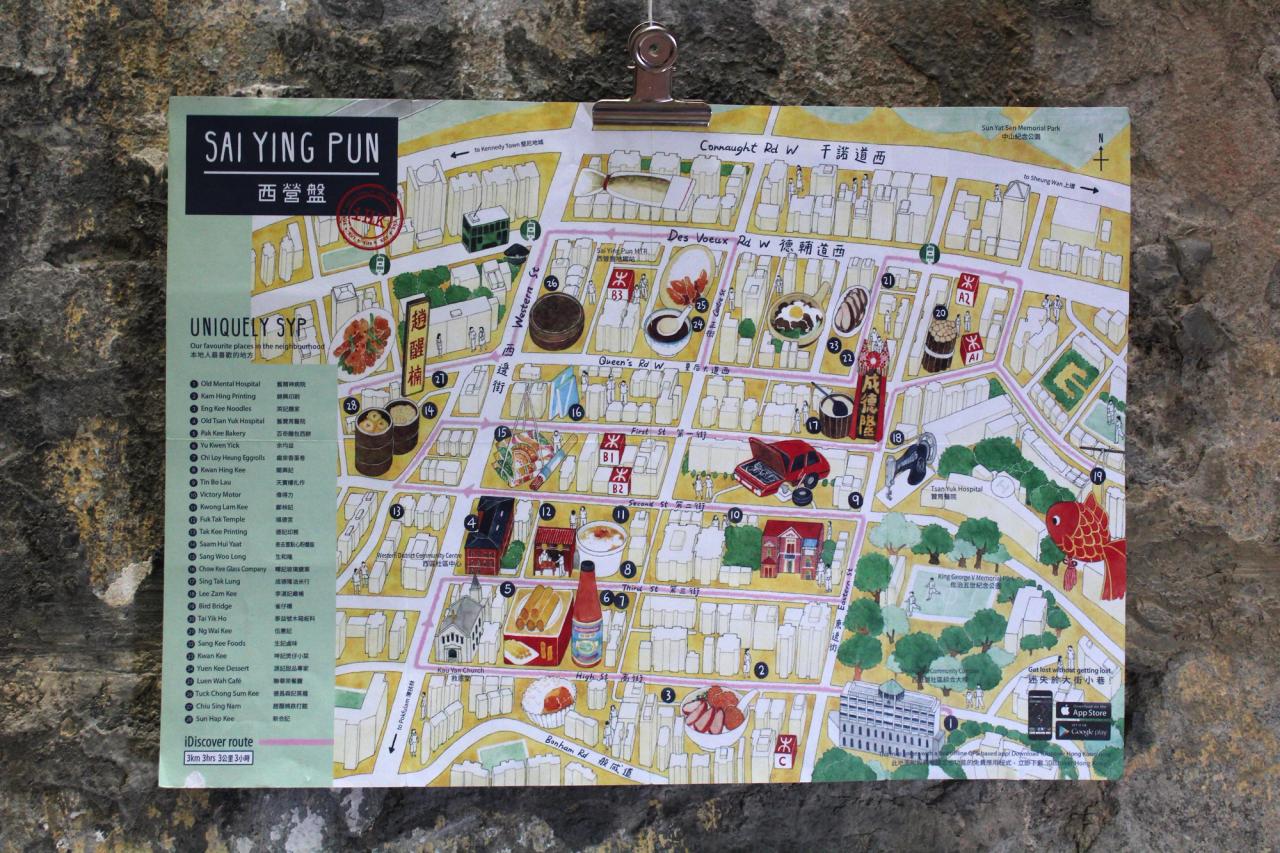
Credits
Magic Lanes

Powered by

Designed by

About
Magic Lanes
“Magic Lanes” is a community design studio in Sheung Fung Lane. Their mission is to reweave the social fabric and turn the small lane into a place for vibrant street life, an inspiring initiative from the joint Caritas and CACHe. “ 明愛與長春社聯手策劃「重塑西營盤―公共空間再生計劃」,在西營盤常豐里以一刻社區設計館為基礎,開展重塑社區空間的工作,促進居民參與,引發想像,凝聚共識,建設社區,再現街道生活,但求營造一個可以重覓人情的空間
www.facebook.com/magiclanesstudioUrban Renewal Fund Urban Renewal Fund
This project was part of an inclusive community placemaking initiative in Sai Ying pun by Caritas Community Centre supported by the Urban Renewal Fund.
www.sparkraise.comCarmen Ng
Hong Kong born painter and illustrator who loves paper, watercolour and ink. She has visualised the unique craft culture of SYP in her signature hand-drawn style. 香港出生的插畫家,以水彩和墨水作畫。 她以手繪風格展現了西營盤獨特的工藝文化。
www.carmen-ng.com